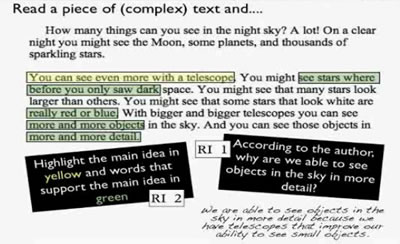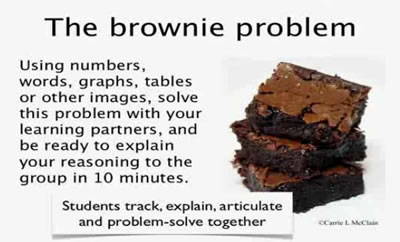 The Common Core State Standards ask students to perform with higher levels of cognition and application, and brain training and specific teaching methods can help students succeed with these new standards, experts say.
The Common Core State Standards ask students to perform with higher levels of cognition and application, and brain training and specific teaching methods can help students succeed with these new standards, experts say.
According to Margaret Glick, a neuroscience expert and educational consultant at the International Center for Leadership in Education (ICLE), the Common Core State Standards and the accompanying assessments will cognitively require more than past standards.
“They will require a deep understanding of content, complex performances, real-world application, habits of mind to persevere, higher levels of cognition and cognitive flexibility,” Glick said during “The Common Core State Standards and the Brain,” a webinar sponsored by the Learning Enhancement Corporation.
(Next page: 4 neuroscience teaching methods)
Current standards in most states, said Glick, are not as rigorous as the Common Core State Standards and aren’t assessed at the higher levels of Bloom’s Taxonomy.
Glick said that with a greater emphasis on higher thinking levels, student brains will need new training to develop what she calls “superhighway thinking patterns.”
“Neural connections create thinking patterns,” Glick said. “Think of learning as a footpath in a forest. Before you learn, it’s nothing but shrubs and trees. Once you learn something, a footpath is created. Keep practicing this new learning pattern and the footpath becomes a road, eventually becoming a superhighway. This only happens with practice and application.”
Glick argued that students will need different ways to practice and new methods of application to succeed with the Common Core State Standards (CCSS) and their assessments, meaning teachers will need to implement different methods of planning, practice, and instruction that foster the effective development of neural networks.
(For more information on how CCSS differ from most current standards, visit http://www.corestandards.org.)
To help educators better “brain train” their students, Glick proposes these four methods, which she believes are the best mediators and best ways to formatively assess and instruct:
1. The use of cognitive markers for English Language Arts (ELA)
2. The use of text-dependent questions (ELA)
For example, in the slide below, cognitive markers can indicate thesis and thesis support. Text-dependent questions are questions that ask students to understand and explain the text as a whole.
(Next page: Math and the brain)
3. The use of Socratic seminar (Social Studies)
In this instance, during a Socratic seminar, students have a venue to practice articulating their thoughts, gaining cognitive flexibility, and evaluating concepts they are learning about in a realistic, active, and social setting.
Methods such as simulations and case studies will also facilitate the instructional shifts needed for social science studies, said Glick.
4. The use of Cognitively Guided Instruction (CGI) (Math)
This method, developed by the University of Wisconsin-Madison, encourages students to reason for themselves without simply using a generic formula to solve almost identical problems.
CGI problems are usually real-world-based, ask students to publicly justify and explain their solution, and require teachers to open up their instruction to students’ original ideas and to guide each student according to his or her own developmental level and turn of reasoning.
Glick said methods for science will soon be announced, but she knows they will include inquiry, problem-based learning, and solving problems through design.
“It’s important to remember this: The brain becomes what it does,” Glick concluded.
- #4: 25 education trends for 2018 - December 26, 2018
- Video of the Week: Dealing with digital distraction in the classroom - February 23, 2018
- Secrets from the library lines: 5 ways schools can boost digital engagement - January 2, 2018





Comments are closed.